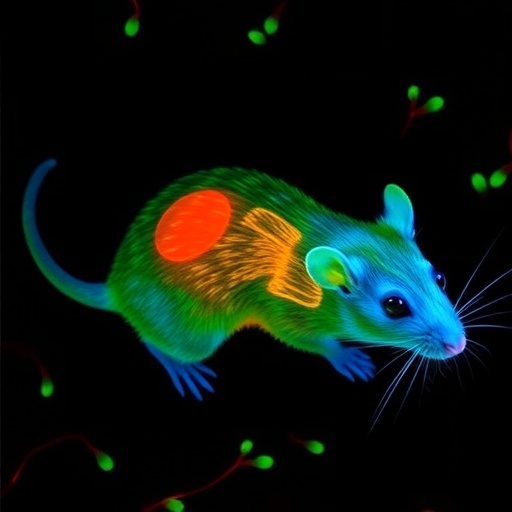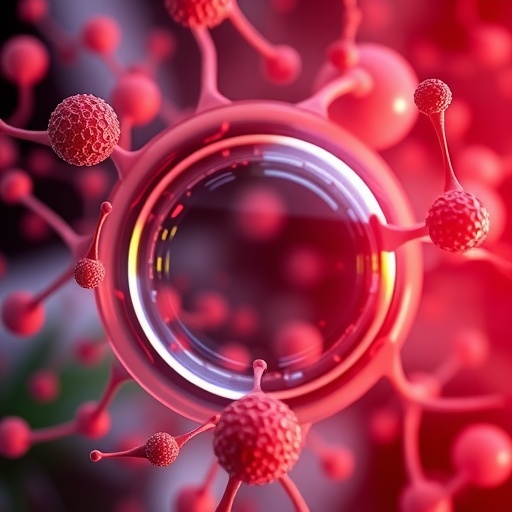
In a groundbreaking study published in Nature Communications, researchers have unveiled a novel protective mechanism within the kidney’s renal tubular cells that shields against the toxic effects of cisplatin, a widely used chemotherapy agent notorious for causing nephrotoxicity. This discovery not only advances our understanding of kidney injury at a molecular level but also opens promising avenues for therapeutic interventions to mitigate cisplatin-induced kidney damage, an urgent clinical challenge that limits the use of this potent anticancer drug.
Cisplatin’s efficacy in treating various malignancies is often compromised due to its deleterious side effects on the kidneys, which manifest as acute kidney injury and nephrotoxicity. Despite intense research, the molecular underpinnings of cisplatin-induced renal injury have remained incompletely understood. The current study, led by Chen and colleagues, reveals that a previously underappreciated protein, gasdermin E (GSDME), expressed specifically within renal tubular epithelial cells, plays a critical protective role by interfering with a signaling axis involving O-linked N-acetylglucosamine transferase (OGT), STAT3, and S100A7A.
At the heart of this research lies the interplay between GSDME and the OGT-STAT3-S100A7A axis, a complex molecular cascade that had not been fully characterized in the context of nephrotoxicity. GSDME is traditionally known for its role in pyroptosis, an inflammatory form of programmed cell death. However, this study compellingly demonstrates that in renal tubular cells, GSDME assumes a protective, cytoprotective function, curbing detrimental signals that would otherwise exacerbate cellular injury during cisplatin exposure.
.adsslot_0BN2DV4f9b{width:728px !important;height:90px !important;}
@media(max-width:1199px){ .adsslot_0BN2DV4f9b{width:468px !important;height:60px !important;}
}
@media(max-width:767px){ .adsslot_0BN2DV4f9b{width:320px !important;height:50px !important;}
}
ADVERTISEMENT
The investigators used male murine models, leveraging advanced genetic knockout techniques to elucidate the functional consequences of GSDME deficiency. Mice lacking GSDME expression in their renal tubules exhibited exacerbated renal damage upon cisplatin administration, as evidenced by worsened kidney function tests, increased tubular cell death, and enhanced inflammatory responses. Conversely, the presence of GSDME significantly impeded the activation of OGT, a key enzyme that catalyzes the addition of O-GlcNAc moieties to target proteins, thereby modulating their activity and stability.
OGT is a pivotal regulator of cellular stress responses, but its overactivation has been implicated in pathological processes including inflammation and cell death. This research uncovered that OGT-mediated modification of STAT3, a master transcription factor involved in immune regulation and cell survival, amplifies the expression of S100A7A, a secreted protein associated with inflammatory signaling and tissue injury. By obstructing this axis, GSDME effectively prevents excessive STAT3 activation and subsequent S100A7A-mediated damage, thereby preserving renal tubular integrity.
Beyond the molecular insights, this study fills critical gaps in our understanding of the cellular response to chemotherapeutic stress in the kidney. The intricate balance between cell death and survival pathways determines tissue fate following cisplatin exposure. The protective role of GSDME highlights a shift in the paradigm that gasdermins solely execute inflammatory death; instead, they can modulate crucial signaling networks to impede injury.
The researchers also made use of cutting-edge omics technologies, including transcriptomic and proteomic analyses, to interrogate the global cellular changes induced by cisplatin in the presence or absence of GSDME. These approaches revealed that GSDME-deficient renal tubular cells undergo enhanced pro-inflammatory and pro-fibrotic transcriptional programs, reinforcing the phenotype of aggravated nephrotoxicity. Notably, the attenuation of these programs by GSDME presence underscores its function as a molecular brake on detrimental pathological signaling.
Intriguingly, the specificity of GSDME’s protective effect to male mice hints at sex-dependent variations in renal response to injury, an area warranting further exploration. Sex hormones and genetic factors may influence the expression and activity of GSDME or its downstream targets, contributing to differential susceptibility to nephrotoxic insults between males and females. This observation paves the way for personalized therapeutic strategies that consider patient sex in the management of chemotherapy-associated renal injury.
Therapeutically, targeting the OGT-STAT3-S100A7A axis could offer a novel approach to prevent or reduce cisplatin-induced kidney damage. Pharmacological inhibitors of OGT and STAT3 are already under investigation in various inflammatory diseases and cancers, and their repurposing could be explored in the context of nephroprotection. However, such interventions must be cautiously developed to avoid disrupting the physiological functions of these proteins elsewhere in the body.
The study also highlights the potential of GSDME itself as a therapeutic target or biomarker. Enhancing GSDME expression or mimicking its function in renal tubular cells might fortify the kidney’s resilience to cisplatin and possibly other nephrotoxic insults. Additionally, urinary or plasma levels of molecules within this axis, such as S100A7A, could serve as early indicators of kidney injury, allowing for timely clinical interventions.
This research not only deepens the molecular understanding of cisplatin nephrotoxicity but also exemplifies the power of integrating molecular biology, genetics, and physiology to unravel complex disease mechanisms. The discovery that a gasdermin family member can play a protective role with important clinical implications may inspire a reevaluation of gasdermin functions in other tissues and disease contexts.
Furthermore, the elucidation of the OGT-STAT3-S100A7A axis in renal injury provides new insights into the broader field of inflammatory signaling and cell fate control, underscoring the tightly regulated networks cells employ to counteract stress and damage. Understanding these networks is paramount for developing targeted therapies that harness endogenous protective mechanisms.
The work by Chen et al. adds a vital piece to the puzzle of how kidneys cope with chemotherapy-induced stress and suggests that leveraging intrinsic cellular defense systems could revolutionize the management of renal toxicities in cancer patients. As chemotherapeutic regimens become more complex and patient survival improves, protecting organ function without compromising anticancer efficacy will remain a top priority for cancer care.
Looking ahead, future studies are needed to translate these findings into clinical applications, including the development of GSDME-based therapies or small molecule modulators of the identified pathway. Investigating whether similar mechanisms operate in humans and across different nephrotoxic agents will also be crucial for broadening the impact of this research.
In summary, the identification of renal tubular GSDME as a guardian against cisplatin-induced nephrotoxicity by interrupting the OGT-STAT3-S100A7A axis represents a significant leap forward in nephrology and oncology. This study not only enhances our molecular understanding of kidney injury but also points to new strategies for protecting renal function during life-saving cancer treatments. As such, it stands as a remarkable example of how detailed mechanistic research can illuminate paths to ameliorate the side effects of chemotherapy, ultimately improving patient outcomes and quality of life.
Subject of Research:
Renal protection mechanisms against cisplatin-induced nephrotoxicity involving GSDME and the OGT-STAT3-S100A7A signaling axis in male mice.
Article Title:
Renal tubular GSDME protects cisplatin nephrotoxicity by impeding OGT-STAT3-S100A7A axis in male mice.
Article References:
Chen, Q., Sun, P., Zhou, J. et al. Renal tubular GSDME protects cisplatin nephrotoxicity by impeding OGT-STAT3-S100A7A axis in male mice. Nat Commun 16, 6807 (2025). https://doi.org/10.1038/s41467-025-62071-8
Image Credits: AI Generated
Tags: acute kidney injury and chemotherapychemotherapy-induced renal damage preventioncisplatin nephrotoxicity mechanismcisplatin side effects on kidneysgasdermin E role in kidneysmolecular mechanisms of renal injurynephroprotective strategies in cancer treatmentOGT-STAT3-S100A7A signaling axisrenal tubular cell protectionresearch on kidney injury biomarkerstherapeutic interventions for nephrotoxicityunderstanding renal cellular response





